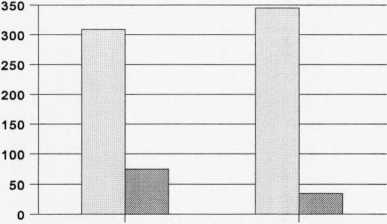5.4.2.2.5 Contrast task
Scoring criteria for the contrast task
Each child was asked two questions, one per target word. Provision of appropriate contrasts
was scored as correct, while provision of inappropriate contrasts was scored as incorrect. For
the present experiment appropriate contrast was considered if the target word was different
from another item from the same semantic category (e.g. appropriate contrast for the abez
(oboe) was any musical instrument contrast, while appropriate contrast for the feber (tepee)
was any type of house contrast). All the other contrasts were considered as inappropriate.
Each child could get a score from 0 - 2.Qualitative analysis of children’s contrasts was also
carried out.
Analysis
If all children were correct on the two target words, the maximum total score would be 384
for all the participants in each post test. As the Figure 5.15 below shows, most of the children
provided “don ,t know /irrelevant'' responses for both post tests. The contrast task was quite
difficult for the children.
Figure 5.15 Children’s performance on the contrast task for both post tests

Immediate post test
Delayed post test
і___j Nozirrelevantcontrasts
B Appropriate contrasts
To what extent does children ,s performance on the contrast task differ by age ?
If all children from each age group were correct on the two target words, the maximum total
score would be 128 for each age group in each post test. Figure 5.16 below demonstrates
children’s performance on the contrast task by age for both post tests.
153
More intriguing information
1. BEN CHOI & YANBING CHEN2. The name is absent
3. A Dynamic Model of Conflict and Cooperation
4. Licensing Schemes in Endogenous Entry
5. The name is absent
6. Imitation in location choice
7. On the Integration of Digital Technologies into Mathematics Classrooms
8. The Environmental Kuznets Curve Under a New framework: Role of Social Capital in Water Pollution
9. Reputations, Market Structure, and the Choice of Quality Assurance Systems in the Food Industry
10. ¿Por qué se privatizan servicios en los municipios (pequeños)? Evidencia empírica sobre residuos sólidos y agua.